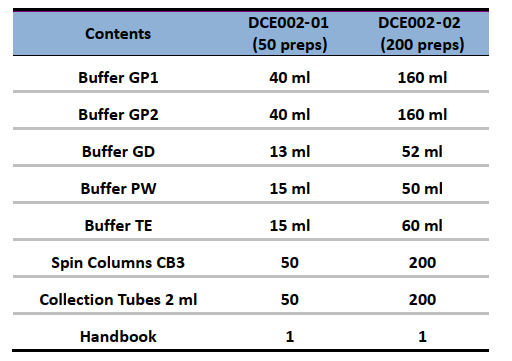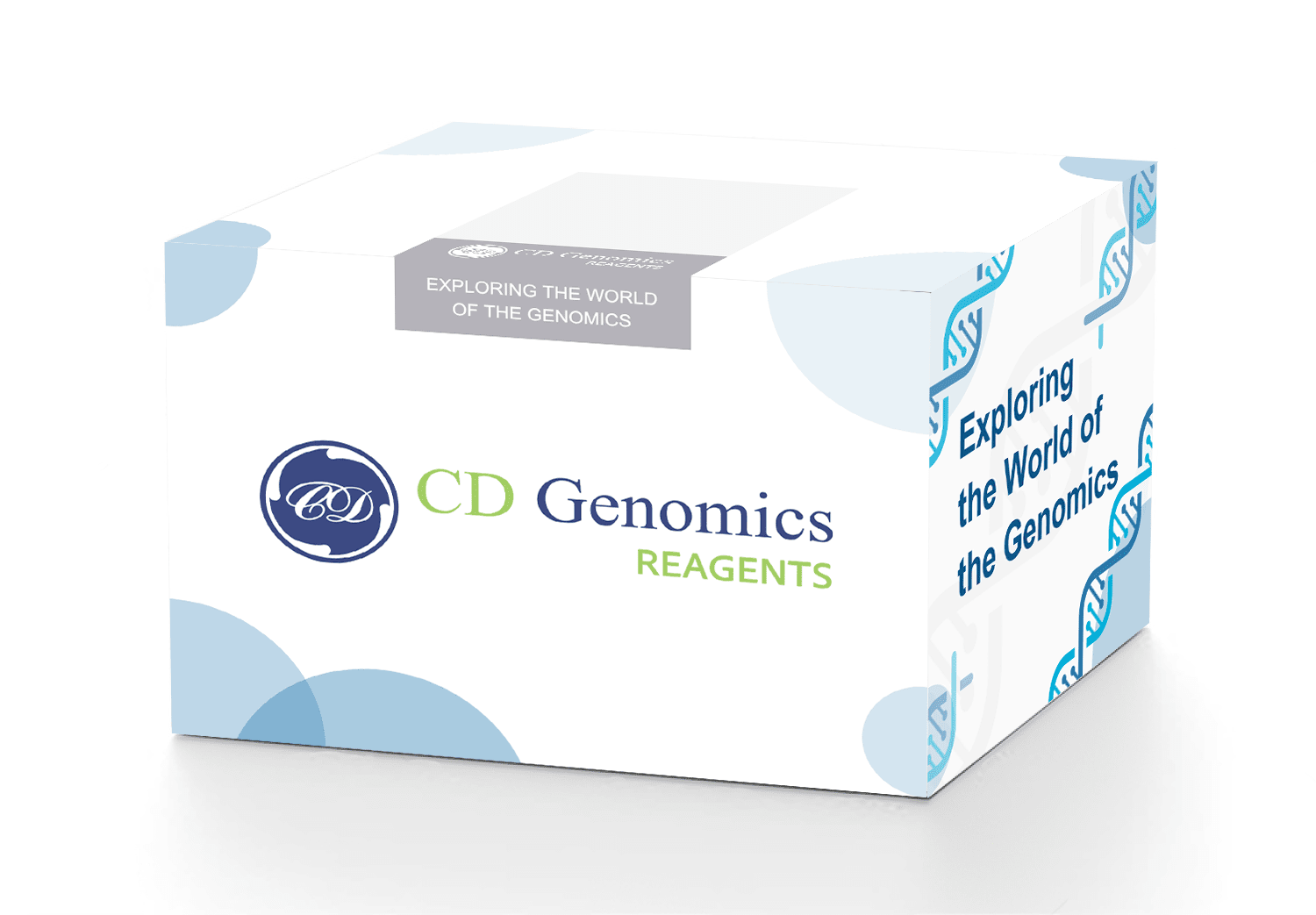The Plant Genomic DNA Kit was created to isolate genomic DNA in a quick, easy, and cost-effective manner. Polysaccharide, polyphenol, and enzyme inhibitors are removed from plant tissues using a unique silica-membrane technology and its buffer solution. Purification of genomic DNA from a wide range of plants is also possible with this kit. For molecular biological experiments such as PCR, qPCR, restriction enzyme digestion, hybridization, and DNA library construction, the purified DNA has a high purity and reliable quality. A sample of about 100 mg wet weight plant tissue or 30 mg lyophilized plant tissue is required.
Storage:
Store at room temperature (15-25℃)
Components:

Specifications:
| Sample amount | 100 mg wet weight plant tissue or 30 mg lyophilized plant tissue |
| Features | Fast and convenient workflow enables DNA isolation within 1h. |
| Application | The high pure genomic DNA can be used directly in downstream experiments such as PCR, qPCR, restriction enzyme digestion, hybridization and DNA library construction. |
| Species Category | plants, especially for polysaccharide-rich, polyphenol-rich plant tissues |
| Sample type | fresh or frozen plant tissues |
Ensure that Ethanol (96-100%) has been added into Buffer GD and Buffer PW before use.
- Place 100 mg wet weight plant tissue or 30 mg lyophilized plant tissue and grind the samples thoroughly in liquid nitrogen.
- Add 700 µl 65°C pre-heated GP1 (β-Mercaptoethanol (β-ME) should be added to Buffer GP1 before use. The final concentration of β-ME is 0.1%) to the powered plant tissue, Vortex for 10-20 s to mix, make sure to disperse all clumps and then Incubate for 20 min at 65°C, mix by inverting the tube for several times.
- Add 700 µl chloroform, mix by inverting the tube for several times, centrifuge for 5 min at 12,000 rpm (~13,400 × g).
Note: if the plant sample contains polyphenol or starch, 1:1 of Phenol/Chloroform could be used before step 3 to extract plant genomic DNA. - Pipet the supernatant water phase to a new tube, add 700 µl buffer GP2, mix by inverting the tube for several times.
- Pipet all of the mixture from step 4 into the Spin Column CB3 (place the Spin Column CB3 in the collection tube first). Close the CB3 lid and centrifuge for 30 s at 12,000 rpm (~13,400 × g). Discard the filtrate and place the spin column CB3 into the collection tube.
The sample volume exceeds 700 µl, centrifuge successive aliquots in the same column. - Add 500 μl Buffer GD (Ensure that ethanol (96-100%) is added to Buffer GD before use), centrifuge at 12000 rpm (~13,400 × g) for 30 s then discard the filtrate and place the Spin Column CB3 back into the collection tube.
- Add 600 μl PW (Ensure that ethanol (96-100%) is added to Buffer PW before use) to the Spin Column CB3, and centrifuge for 30 s at 12,000 rpm (~13,400 × g), discard the flow-through, place the Spin Column CB3 back into the collection tube.
- Repeat step 7.
- Place the Spin Column CB3 in the collection tube, centrifuge for 2 min at 12,000 rpm (~13,400 × g), discard the flow-th rough. Open lid of CB3 and stay at room temperature for a while to dry the membrane completely.
Note: Residual ethanol from Buffer PW may inhibit subsequent enzymatic reactions. - Place Spin Column CB3 to a new centrifuge tube, and add 50-200 μl buffer TE directly onto the CB3 membrane, incubate for 2-5 min at room temperature (15-25°C), and then centrifuge for 2 min at 12,000 rpm (~13,400 × g) to elute.



